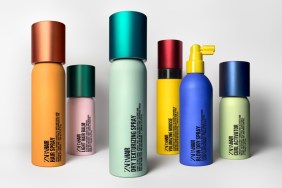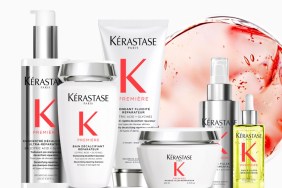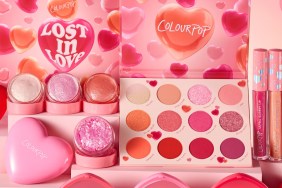
image: Imaxtree
If you work in an industry related to beauty or fashion — or even if you watch a lot of television — you’ll find yourself constantly bombarded by brands trying to prove why their products are the only ones that can help solve your hair and scalp issues. Whether they come from a publicist, hair stylist, commercial, or even your mother, hair myths are everywhere.
Celebrity Hair Stylist Hallie Bowman and P&G Beauty Scientist Teca Gillespie teamed up to help separate fact from fiction when it comes to our hair and the products we use to treat it. Check out their dual perspectives, below.
Myth: You should change your shampoo every so often because your hair gets used to it.
TECA SAYS:
- Hair is technically dead and cannot get “used” to a product. Shampoo will always do its fundamental job of cleaning the hair, and while your hair may feel different when you change your shampoo, you’re not giving your hair a “break” from your normal washing regimen.
- Consider whether you have selected the right product for your hair type. Also, consider your styling regime — are you regularly using waxes and gels that cause build-up?
- Most women don’t realize that something environmental or chemical may have changed the way their hair responds to a product (e.g. a change in environment humidity or temperature, new color treatment, grown out cut, etc).
HALLIE SAYS:
- Hair texture changes over time from factors like puberty, pregnancy, and aging, which affect how hair reacts to a shampoo. Mechanical tools can change the way products perform on hair. For example, if you’re styling your hair with tools more regularly and use straightening irons and heated curling irons more often, it can potentially create more damage that will alter how your hair looks and behaves.
- Mechanical tools can change the way products perform on hair. For example, if you’re styling your hair with tools more regularly and use straightening irons and heated curling irons more often, it can potentially create more damage that will alter how your hair looks and behaves.
- Don’t forget about seasonal changes. Factors like cold winter air coupled with central heating indoors can make hair brittle and dry whereas the same hair may suffer from frizz when faced with the summer’s heat and humidity.
- If your hair reacts to factors like the above, you may want to re-evaluate your hair care regimen to accommodate the changing needs of your hair.
Myth: You should not wash your hair every day.
TECA SAYS:
- This myth originates from the harsh clarifying shampoos that were being used prior to the technological revolution of conditioning agents in the 1980s. Improvements in light conditioning agents used in shampoos and conditioners led the way for a frequent washing regimen.
- Today’s products are tailored for specific needs and hair structures, so shampoos take off only dirt, sebum and styling products. They don’t really “strip” everything off your hair and scalp.
- While there are dry shampoos and other products that can give a quick fix to manage hair that’s not washed, it’s important to remember that not washing your hair may cause other problems.
- Incorporating a frequent washing regimen into your hair care routine can protect hair against damage, as new conditioning shampoo formulations actually help repair damage that has already been done while reducing damage to the outside cuticle. A damaged cuticle can leave hair dull and brittle, and more prone to breakage.
- Worried about color-treated hair? The reality is that the #1 reason your color fades is from the water molecules leeching out the color dye molecules, not the surfactants in your shampoo. Using a shampoo and conditioner designed for color-treated hair can reduce this color fade due to water.
HALLIE SAYS:
- Healthy hair looks better and is easier to style than unhealthy hair. Frequent shampooing can help you achieve a better style by reducing breakage that can leave hair looking thinner and more damaged.
- Dry shampoos don’t do your dirty work for you. They do get rid of excess oil, but don’t give hair life. I relate dry shampoo to applying face powder because it manages shine on your face, but you really need a cleanser to actually clean your face.
- For color-treated hair: Using a shampoo and conditioner frequently that is specifically tailored to treat color-treated hair will help protect hair against styling damage, help reduce color fade, and prolong the intensity of the color.
Myth: Two products with identical ingredient lists will perform exactly the same.
TECA SAYS:
- Just because two products have the exact same ingredient lists, it does not mean they are the same product, or that they will perform the same.
- Most shampoo’s ingredient lists do not show the level of a particular ingredient and only shows the ingredients in rank order from most to least.
HALLIE SAYS:
- Consider that the recipe for egg nog and custard uses exactly the same rank order of ingredients but in very different amounts. One is also cooked, the other is refrigerated. Two very different results. In hair care technology, the complex patented processes to make the formula can change the “recipe” outcome.







